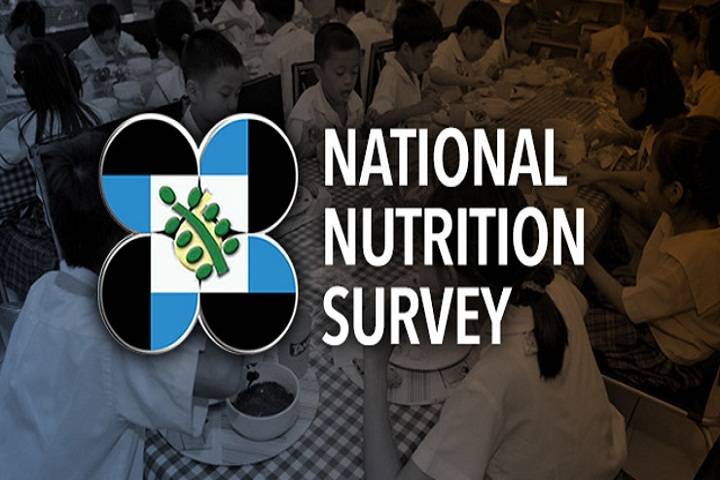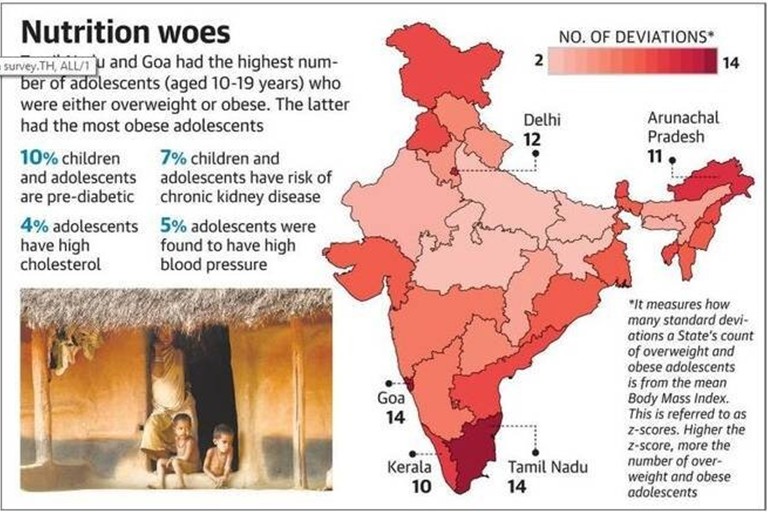
National Nutrition Survey
The first-ever comprehensive National Nutrition Survey has been conducted by the Ministry of Health and Family Welfare and the United Nations Children Fund (UNICEF) to measure malnutrition.
The survey recorded not only micronutrient deficiencies but also details of non- communicable diseases such as diabetes, hypertension, cholesterol and kidney function in children and adolescents.
Key findings
- Nearly 10% of children in the age group of 5-9 years and adolescents in the age group of 10-19 years are pre-diabetic.
- Also, 5% are overweight and another 5% suffer from blood pressure in the age groups mentioned above.
- The first time hard evidence of the coexistence of obesity and undernutrition,
among school-going children has been recorded.

The National Nutrition Survey is different from the National Family Health Survey (NFHS) as,
- NFHS collects data to measure the prevalence of stunting, wasting and underweight and household dietary intake to measure deficiencies.
- Moreover, the survey collects data only for the age groups of 1-5 years and adults, and not for school going children between the age of 5 and 19 years.
Steps Taken by Government of India to curb incidences of Malnutrition
- Under the Pradhan Mantri Matru Vandana Yojana (PMMVY), Rs.6,000 is transferred directly to the bank accounts of pregnant women for availing better facilities for their delivery.
- POSHAN Abhiyaan, launched in 2017-18, aims to reduce stunting, under-nutrition, anaemia and low birth weight babies through synergy and convergence among different programmes, better monitoring and improved community mobilisation.
- The National Food Security Act (NFSA), 2013, aims to ensure food and nutrition security for the most vulnerable through its associated schemes and programmes, making access to food a legal right.
- Mid-day Meal (MDM) scheme aims to improve nutritional levels among school children which also has a direct and positive impact on enrolment, retention and attendance in schools.
Malnutrition and Undernutrition
- Malnutrition refers to deficiencies, excesses or imbalances in a person’s intake of energy and/or nutrients.
- The term malnutrition covers two broad groups of conditions.
- Undernutrition—which includes stunting (low height for age), wasting (low weight for height), underweight (low weight for age) and micronutrient deficiencies (a lack of important vitamins and minerals).
- Obesity— which includes overweight and diet-related noncommunicable diseases (such as heart disease, stroke, diabetes, and cancer).
Essay on Factors for slowdown of Indian Economy












